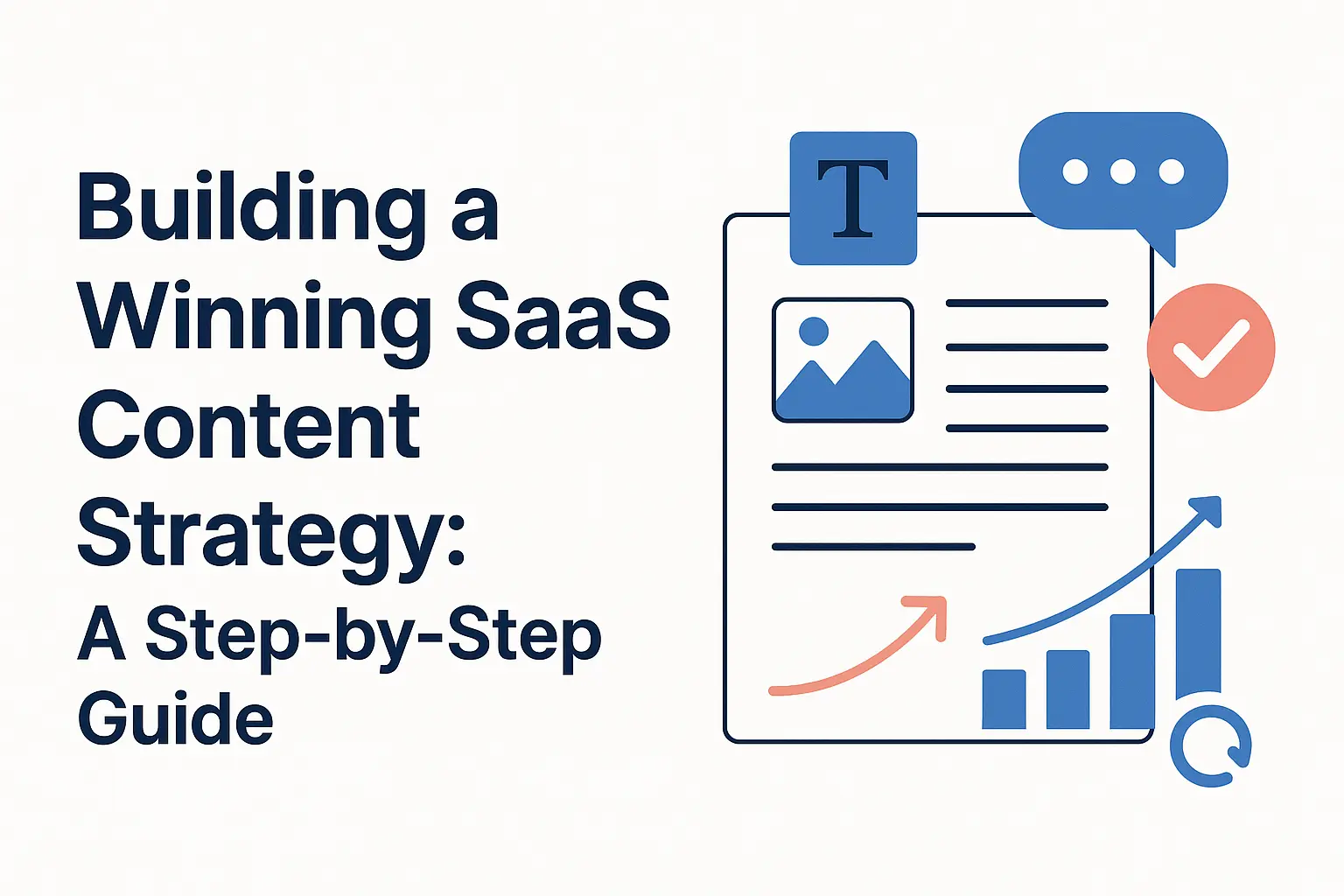SaaS is a long game. Ads can get you quick clicks, but content brings long-term growth. If you’re building a SaaS product and want steady, qualified traffic, a solid content strategy isn’t optional, it’s essential.
Here’s a straightforward guide to creating a B2B SaaS content strategy that works — without drowning in buzzwords or wasted efforts.
Step 1: Know Who You’re Talking To
Before writing a single word, define your audience. For B2B SaaS, your buyers aren’t just random website visitors — they’re decision-makers looking for specific solutions.
Ask:
- What problems are they trying to solve?
- What keywords would they Google?
- What kind of content helps them move from “I’m curious” to “Let’s book a demo”?

This step makes your content purposeful. No more writing for the void.
Step 2: Build a Simple b2b SaaS Blog Plan
You don’t need to post every day. You need to post the right things.
Start with these:
- Problem-solving posts: Answer common questions your audience Googles
- Use-case articles: Show how your tool fits into real workflows
- Comparisons: Help users choose between you and other tools
- Thought leadership: Share unique insights on trends in your space
Map 10–20 core topics around your product. Organize them into a blog calendar. That’s your SaaS blog plan. Simple and sustainable.
Step 3: Pick the Right Keywords (Without Stuffing)
SEO isn’t dead — it’s just smarter now. Instead of cramming your content with keywords, use them naturally.
- Start with your parent keyword (like “SaaS content strategy”)
- Add cluster keywords that support it (like “B2B content strategy” or “SaaS blog planning”)
- Use long-tail phrases that match what your audience actually searches
Tools like Ahrefs, Semrush, or even free ones like Google Search Console help here. Focus on search intent. That’s what ranks today.
Step 4: Create Content That’s Actually Useful
Here’s the truth: Most SaaS content is boring. It’s either too generic or too technical.
What works?
- Real examples
- Clear formatting (headers, bullets, no walls of text)
- Answers, not fluff
- Calls to action that make sense (book a demo, try a free trial, etc.)
You’re not writing to impress Google. You’re writing to solve problems. Do that, and rankings follow.
Step 5: Promote It Like You Mean It
Publishing a blog and hoping people find it? That’s not a strategy. Share your content where your audience hangs out:
- LinkedIn (personal + company pages)
- SaaS communities (like Indie Hackers or r/SaaS)
- Newsletters
- Cold email with a soft link
You can also repurpose a blog into a LinkedIn carousel, a short video, or even a webinar. Good content should work more than once.
Step 6: Track, Improve, Repeat
Set up basic tracking:
- Use Google Analytics to see traffic
- Use Search Console to monitor keyword rankings
- Use a heatmap tool to understand user behavior
Then ask:
- What’s working?
- What’s not getting clicks or conversions?
- Can we update older posts with better info or CTAs?
Content isn’t a one-time push. It’s a loop.
Bonus Tip: Learn from Trusted Content Marketing Platforms
If you want examples of B2B SaaS companies doing content right, check out directories like GoodFirms. They showcase agencies, case studies, and insights that can help you benchmark your own content approach. Whether you’re DIY-ing your strategy or looking for help, platforms like GoodFirms offer curated resources worth bookmarking.
Final Thoughts
A winning SaaS content strategy isn’t about doing more — it’s about doing what matters. Understand your audience. Focus on content that helps. Promote it smartly. Track and improve over time.
You don’t need a 50-page content plan. You just need a clear process, a few good posts, and consistency. Start there — and let your product speak through content that converts.



